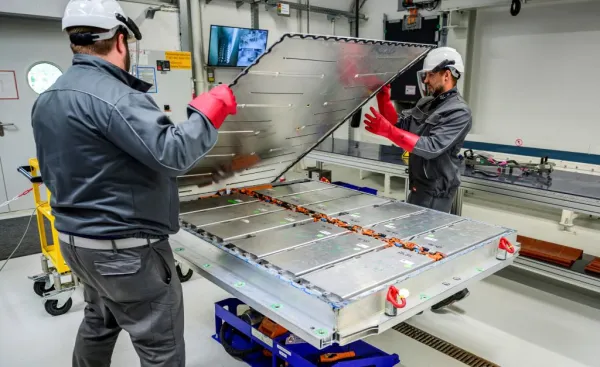
The price of lithium has been on a roller coaster ride over the past few years. The metal is, of course, a crucial component in batteries.
Lithium prices shot up around 2021 as electric vehicle investments and sales took off. Then, last year, prices plunged as more supply came online and EV sales started to level off.
But despite the down market, mining giant Rio Tinto is buying a lithium company for $6.7 billion.
If the lithium market has been struggling so much, it’s fair to wonder why a big mining company decided to spend billions to increase its footprint in it.
“This is a countercyclical move on the part of Rio Tinto and pretty opportunistic,” said Chris Berry, president of House Mountain Partners.
Translation: Rio Tinto is following the first half of an old investing adage — buy low. Its expectation is that lithium’s a good bet in the long run.
“They’re looking out five, 10, 15 years from now and want to be a part of this shift, regardless of near-term fluctuations with respect to EV demand,” Berry said.
Because even though that demand has fallen well short of car companies’ very lofty expectations from a few years ago, it’s a technology that’s probably not going away, said Jessika Trancik at the Massachusetts Institute of Technology.
“There are good reasons to expect that growth and demand for EVs to continue, and therefore a continued growth in demand for lithium,” Trancik said.
In the U.S., that demand growth could really start to climb again in the next decade, said Tom Moerenhout, a professor at Columbia University, because EV costs could keep falling, and “the other element is availability of charging infrastructure, and that is also improving.”
And lithium batteries will probably still be powering EVs five to 10 years from now, said Adam Megginson, a senior analyst at Benchmark Mineral Intelligence, because lithium is special.
“You kind of can’t get past that chemistry fundamental, which is how light it is versus how much energy it’s able to store, which is so important for EV applications where you’re carrying that weight around,” Megginson said.
And while it’s waiting for the price of lithium to rebound, Rio Tinto has other ways to make money, including iron ore and aluminum, Moerenhout said.
“That means that they can carry risk for a longer time. That means that they can wait for the lithium price to increase for a longer time,” Moerenhout said.
And eventually, if all goes to plan, they can complete the other half of that old investing adage and sell high.
